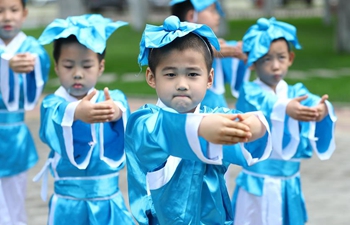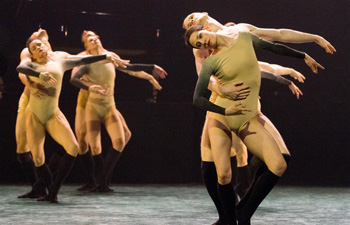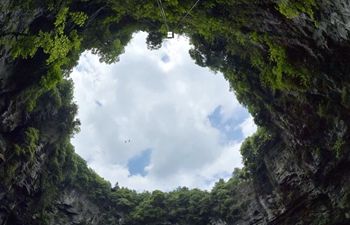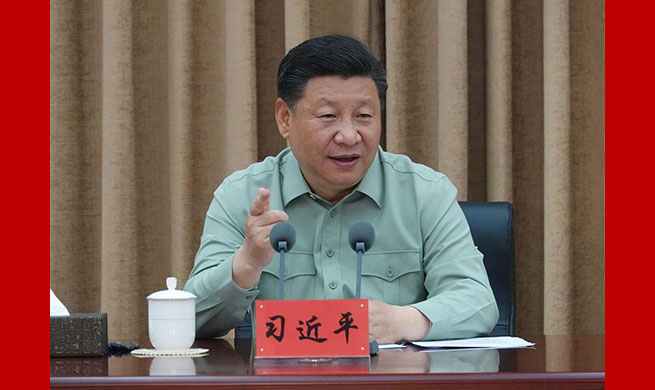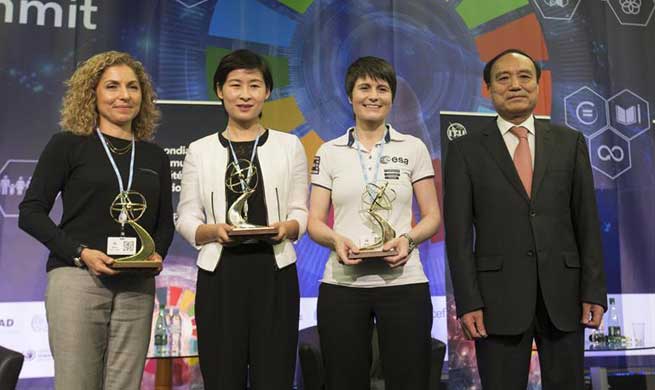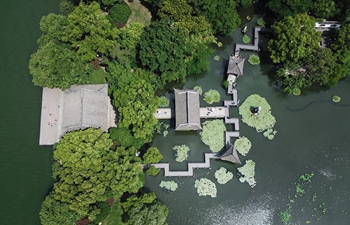BEIJING, May 18 (Xinhua) -- As an imperial residence, the Forbidden City, a massive palace complex in central Beijing, has historically been off-limits.
But not any more. As the most-visited museum in China, it is now leading a crusade to attract millennials to the country's rich cultural heritage in unprecedented new ways.
On Friday, the museum brought the painting "Riverside Scene at Qingming Festival" to life, using 360-degree holographic technology and a 4D dome screen. The technology enables visitors to immerse themselves in the masterpiece by artist Zhang Zeduan from the Northern Song Dynasty (960-1127). It depicts the lives of people from all walks of life in the then prosperous capital Bianliang, today's Kaifeng in central Henan Province.
"Cultural relics are not just lifeless remains. Armed with technology, a painting can take the audience back to the history while impressing them with the beauty of the art," said Shan Jixiang, curator of the Palace Museum.
In recent years, the museum made extra efforts in reaching out to the public, with new products, exhibitions, educational resources and digital technology.
Shan said the trend fit the theme of this year's International Museum Day, which falls on Friday: "Hyperconnected museums: new approaches, new public."
In early 2016, "Masters in the Forbidden City," a documentary series featuring the work of the museum's relics restorers, became a surprise online hit.
The conviction, inner peace and persistence of the technicians made them celebrities among China's millennials. Shan believes the documentary's popularity was responsible for a surge of applications for jobs with the restoration team.
The museum plans to open its restoration workshop to the public on an appointment basis from June.
Last December, a weekly program "National Treasure," co-produced by China Central Television, the Palace Museum and eight others, also received a phenomenal reception.
"The popularity of the programs suggest the public has a strong need to learn more about China's traditions," Ren Wanping, deputy director of the Palace Museum, told Xinhua. "The programs met their needs and resonated in their hearts."
A special guest representing at "National Treasure," Ren said the inner part of the TV show was about culture.
Last May, the museum exhibited works by four early Qing Dynasty (1644-1911) monks, considered some of the greatest painters of the time. Curators built a studio showcasing a Chinese zither, table censer, Buddha statue niche and potted landscape to let visitors better understand the Buddhist literati.
In 2002, only 30 percent of the Forbidden City was open to the public. Today, more than 85 percent of the complex is accessible and about 20,000 items are on show.
"The numbers of collections and visitors keep growing," Shan said. "But that is not enough. We need to bring the relics in our museums to life and display their unique beauty in innovative ways."
YOUTHFUL ENTHUSIASM
To arouse the enthusiasm of the country's younger generation towards cultural heritage, the museum hosts over 25,000 education events each year, with 200,000 people attending, Shan revealed.
In March, 2004, the museum became the first in China to provide free admission and guided tours for middle and primary school student groups. Since 2006, it has been offering vacation lectures and volunteer positions for students to participate in guide, consultancy or educational programs. The museum website also has a youth section.
"We want young people to understand and inherit China's splendid traditions," Shan said.
Wang Wenqian volunteered at the museum for three years. She bought some souvenirs before ending her service and setting off to study in Europe.
"I will be forever grateful for the opportunity to work in the museum. It embodies the ancient wisdom and philosophy of China for us to learn," Wang said.
The volunteer service has become increasingly popular. About 3,000 people have signed up and spent more than 130,000 hours with the relics in the palace.
Volunteering is just one aspect. The souvenirs Wang bought are simple, like bookmarks and fridge magnets, and she gave them to her foreign friends.
The Palace Museum has over 9,600 kinds of branded souvenirs and last year it sold items worth more than 1 billion yuan (157 million U.S. dollars).
"They represent Chinese culture," Wang said. "My teachers and classmates like them. Some said they would visit the museum for that."





